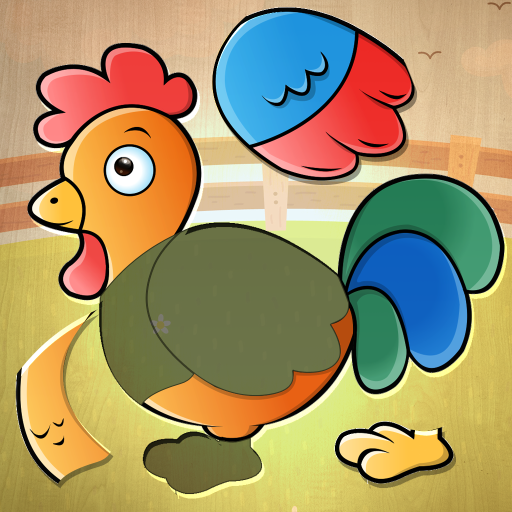Labyrinth Town - Maze puzzle adventure
Embark on a puzzle-filled journey in a captivating labyrinth town.

- 9.66.00.01 Version
- 3.3 Score
- 5M+ Downloads
- In-game purchases License
- 3+ Content Rating
Introducing Labyrinth Town
The Junk Food Monster has invaded Labyrinth Town, snatching up kids and pandas who indulge in unhealthy snacks. Little panda Miumiu falls victim to the monster's clutches due to her poor eating habits and is now imprisoned somewhere in the maze. Your mission is to aid Kiki in navigating the labyrinth filled with junk food to rescue Miumiu!
Exciting features:
- Engage in a 3D battle with the monster within the captivating labyrinth;
- Embark on an adventure with Kiki exploring the 3D maze, town, and castle;
- Dive into interactive 3D games within the labyrinth to liberate the adorable panda!
Our dietary choices significantly impact our well-being, necessitating potential alterations. This fantastical journey imparts valuable lessons to children about unhealthy foods to avoid and their adverse effects. The labyrinth is teeming with enjoyable challenges and activities to entertain alongside the little panda. Immerse yourself in this delightful 3D maze escapade with your beloved panda, Kiki! Play for free in thrilling 3D!
About BabyBus
At BabyBus, we are committed to igniting children's innovation, creativity, and exploration, tailoring our products from the kids' perspective to empower them to discover the world autonomously.
BabyBus now provides a rich array of products, videos, and educational content for a global fanbase comprising over 400 million youngsters aged 0-8! Our extensive repertoire includes 200+ educational apps for kids, 2500+ episodes of diverse nursery rhymes and animations spanning Health, Language, Society, Science, Art, and more.
Contact us: ser@babybus.com
The 10 Biggest Feeding Mistakes Parents of Toddlers Make
By Lydia Denworth Updated on September 3, 2024 Medically reviewed by Janet Helm, MS, RDN
1. Set a Good Example
The first thing you can do to help avoid toddler eating problems? Eat well yourself—in front of them.
Adults who enjoy a variety of nutritious foods in a happy setting are far more likely to have kids with healthy attitudes toward eating than adults who constantly diet, overeat, refuse vegetables, or simply leave kids to eat alone, says Jane Kauer, who studies picky eaters at Philadelphia's Monell Chemical Senses Center.
Modeling a healthy relationship with food does more than help kids with which foods they choose. It also helps them understand when they are hungry and how to tune into their bodies.2 It can also help prevent disordered eating habits.
2. Take the Pressure Off
Any kind of coercion to eat food is the parental behavior experts object to most. "Children become overwhelmed," says Ellyn Satter, RD, a Madison, Wisconsin-based dietitian and family therapist. "Even if kids do eat the food, they're likely to avoid it when they get the chance."
Plus, pressure makes eating a control issue. "It's not about food anymore; it's about a child's need to be autonomous," the late Betty Ruth Carruth, PhD, RD, former dietitian and professor at the University of Tennessee, told Parents.
Tip
Forcing your child to eat food can begin with the first spoonful of rice cereal. "New textures aren't going to be accepted right away," says Bryan Vartabedian, MD, a chief pediatric officer at Texas Children's. "Offer three or four spoonfuls, let it come out on the bib, and put away the spoon."
Some babies do better with homemade purees, which allow for very gradual texture changes. Once kids can feed themselves, Satter advocates a strategy—applauded by many dietitians and doctors—of division of responsibility.3 "Parents are responsible for what is presented to eat and the manner in which it is presented," she explains. "Kids are responsible for how much and even whether they eat."
3. Avoid Using Food as a Reward
Offering cake to children only if they eat their broccoli is just another form of pressure. It adds to mealtime tension and won't help them like broccoli.
In fact, it may have the opposite effect, according to Leann Birch, PhD, a retired professor of human development and family studies and director of the Center for Childhood Obesity Research in the Department of Nutritional Sciences at Pennsylvania State University.
Another problem: When the reward is dessert, it sends the wrong message about what's worth eating and sweets become more valuable than meat and vegetables. Plus, a study from 2021 has found that even when kids receive a food reward for performing a cognitive task, the food became more valuable to them than to kids who received the food without performing a task.4
How do you make the joy of eating its own sweet reward? Avoid the issue by offering only fruit. Or make sweets a judgment call rather than the result of strict accounting. You also can occasionally offer sweets during scheduled snack times or as treats so they're not associated with meals (or used for bargaining.)
"A child who isn't hungry for any healthy choices shouldn't be hungry for sweets either," says Dr. Vartabedian.
4. Don't Give Up on New Foods Too Soon
Too many parents stick to chicken nuggets and grilled cheese because they are consumed without complaint. "To eat a variety of foods, you must have a variety offered to you," says Jean Skinner, PhD, RD, professor of nutrition in the nutrition department at the University of Tennessee.
It pays to persevere: Dr. Birch says it takes 10 to 15 exposures for a child to accept a new food. "You have to keep offering the food with the expectation that the child will eat it," says Satter.
How To Get a Child to Try New Foods
The American Speech-Language-Hearing Association (ASHA) describes the "three Es" in getting a child to accept new foods: expose, explore, and expand.5 These first two Es are preparatory and might involve sensory play, gardening, identifying the food at the market, and cooking.
- Watching you eat it
- Allowing it on their plate
- Putting it in their mouth and taking it out
It's OK if they spit it into a napkin. Try not to get frustrated when kids don't eat, says Satter, "and don't get hysterical with pleasure when they do take a step."
5. Offer Limited Mealtime Choices
It's easy to fall into the trap of preparing something different for each family member. But this doesn't improve eating habits, and it saps time and energy.
Instead, offer limited choices related to what the rest of the family is eating. If you're having sandwiches, for example, kids can choose between turkey and peanut butter.
Be considerate with menu planning. "There should always be at least one item at the table that the child knows and likes," says Satter. Using the "division of responsibility," a child may choose not to eat anything on the table. If that happens, the American Academy of Pediatrics (AAP) recommends offering the food again later.6
6. Keep Serving Sizes Small
In this land of super-size servings, we sometimes forget that children are small and, therefore, need small, child-size portions. One easy way to determine appropriate serving sizes for toddlers is that it should be relatively equal to 1 tablespoon per year of life.7
Too much food is intimidating and discouraging for the child—and disappointing for the parent who sees a full plate even when the child has sampled everything. Start small and remember that one green bean is better than no green beans and you can always offer more.
7. Limit Juice and Snacks
Some children graze all day on cookies, crackers, and other snacks washed down with endless juice boxes. Neither habit helps when it comes to healthy eating because children get full and aren't hungry for more nutritious options when it's time to eat real meals.
It's unnecessary to cut snacks and drinks altogether, says Dr. Vartabedian. "Rather, parents should look at snacks as an opportunity to provide nutritional alternatives or new tastes. Make snack time a ritual—offer a few healthy snack options at specific times of the day." And limit your toddler's juice intake to 4 ounces daily for kids ages 1 to 3, according to the AAP.8 Juice provides limited nutritional benefits and a lot of sugar.
8. Allow for Messes
One of the most common ways young children learn about food is through taste. So it's good to be tolerant of messy mealtimes—if that's what your toddler needs to help them learn about different foods. "Feeding is a multisensory experience," says Dr. Vartabedian.
A new eater who is never allowed to play with food could potentially not enjoy it as much as one who knows the fun of smearing bananas and crumbling crackers. As for toddlers, what they eat is more important than whether they eat it with a fork.
9. Keep Typical Development in Mind
Not everyone will learn to like every food. Some people just taste flavors more strongly, especially bitterness.9 Furthermore, a natural fear of new things, or neophobia, is strongest during the preschool years.
"Parents interpret it as pickiness, but it's actually adaptive and normal," says Dr. Birch. Food neophobia is stronger in some kids than others, mostly due to temperament differences. Extreme food selectivity is also characteristic in children with autism spectrum disorder (ASD).9
When your child refuses new foods, you might be able to chalk it up to neophobia and keep trying. If, after repeated exposures, they still don't like it, just accept that preference for now. But if you're worried about their diet, talk to a health care provider. They can help you find smart substitutions or refer you to a registered dietician.
10. Relax
Even children who seem to live on macaroni and cheese may not eat as poorly as parents think. "Parents label children 'picky eaters, ' and it ends up becoming a self-fulfilling prophecy. A lot of these kids are actually quite normal," says Dr. Vartabedian.
And many improve with age. One of the most important indicators of a serious problem is the child's growth curve. If a child is growing at a normal rate, they are meeting their nutritional needs, Dr. Vartabedian says. He adds that young children meet those needs over a broad period, not meal to meal or day to day.
For reassurance, you can give a multivitamin, but remember that getting nutrients from food is better. Another helpful exercise is to write down everything your child eats—even one bite—for a week. If you come up with at least one serving from every food group, things really aren't so bad after all.
Key Takeaway
Parents play a big role in shaping how kids view food. There are ten tips that parents should aim to follow if they want to help shape healthy eating behaviors including offering limited mealtime choices and taking the pressure off finishing a meal. By adjusting your framework around food, your picky eater should develop a new, healthier mindset.
- Version9.66.00.01
- UpdateSep 11, 2024
- DeveloperBabyBus
- CategoryEducation
- Requires AndroidAndroid 5.0+
- Downloads5M+
- Package Namecom.sinyee.babybus.town
- Signature14065175cf3a46da2d32bc81349a51b6
- Available on
- ReportFlag as inappropriate
-
NameSizeDownload
-
130.66 MB
-
130.80 MB
-
105.38 MB


































Super fun for kids
great learning game
kid friendly
ads if you play longer
crashes sometimes